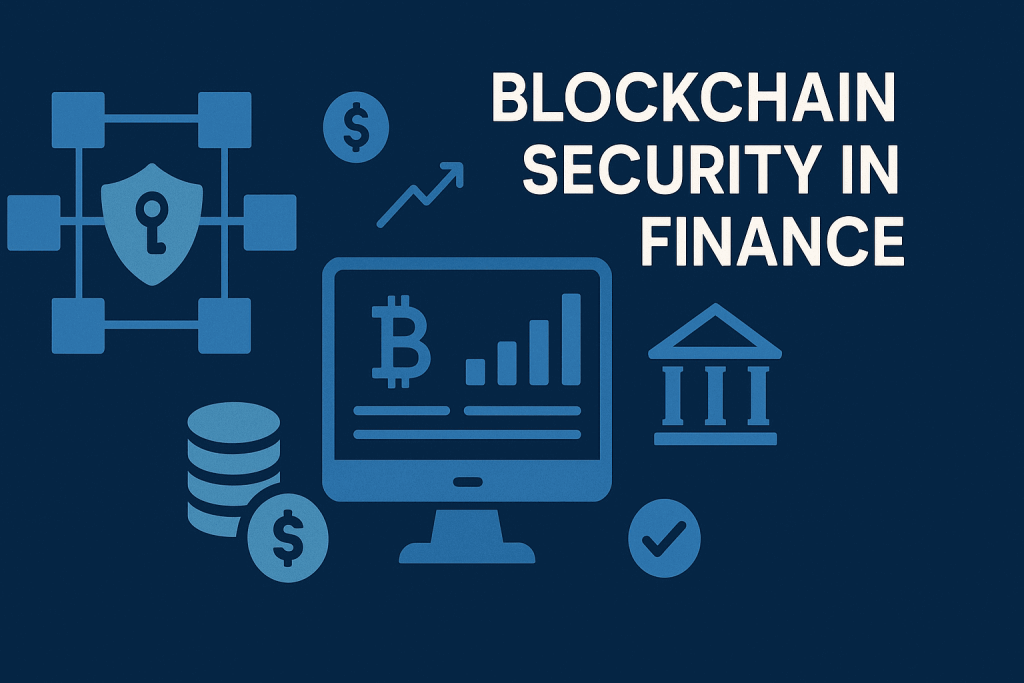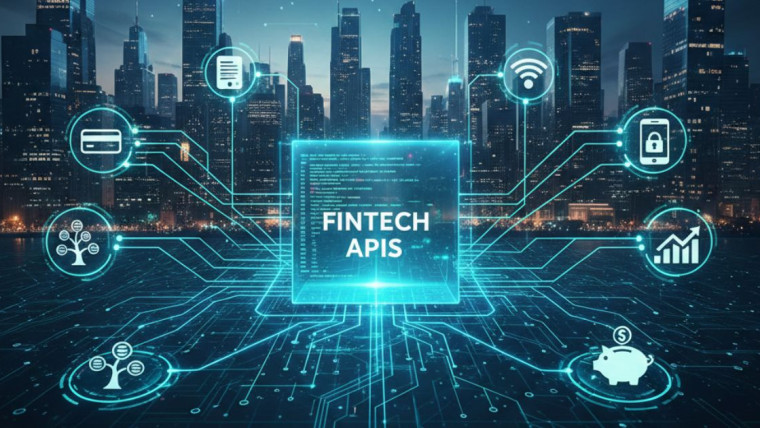Financial institutions face cyber threats every 39 seconds on average. As digital banking, mobile payments, and online trading become the norm, traditional security measures are struggling to keep pace. Blockchain security in finance has emerged as a game-changing solution, offering unprecedented levels of protection for sensitive financial data and transactions.
This revolutionary technology transforms how financial institutions approach cybersecurity. Unlike conventional centralized systems that create single points of failure, blockchain creates an impenetrable network of distributed security checkpoints. For financial professionals, fintech developers, and security analysts, understanding how blockchain enhances cybersecurity isn’t just beneficial—it’s essential for staying competitive in an increasingly digital landscape.
Understanding Blockchain’s Role in Financial Security
Blockchain technology fundamentally reshapes cybersecurity through its decentralized architecture. Traditional financial systems store data in central databases, making them attractive targets for cybercriminals. When hackers breach these systems, they gain access to massive amounts of sensitive information at once.
Distributed ledger technology operates differently. It spreads financial data across multiple nodes in a network, with each transaction requiring consensus from multiple parties before approval. This structure eliminates single points of failure and makes unauthorized access exponentially more difficult.
The cryptographic foundation of blockchain security creates additional protection layers. Each block contains a unique hash that connects to the previous block, forming an unbreakable chain. Attempting to alter any historical transaction would require changing every subsequent block—a practically impossible task that would be immediately detected by the network.
Key Blockchain Security Features Transforming Digital Finance

Immutable Transaction Records
Financial data protection reaches new heights through blockchain’s immutability feature. Once a transaction is recorded and validated by the network, it becomes permanently etched into the blockchain. This characteristic prevents fraud, reduces disputes, and creates an audit trail that regulators and compliance teams can trust completely.
Banks implementing blockchain solutions report significant reductions in financial disputes. The transparent nature of immutable records allows all parties to verify transaction details independently, eliminating the “he said, she said” scenarios that often complicate traditional financial dealings.
Advanced Encryption Protocols
Blockchain encryption employs sophisticated cryptographic techniques that surpass traditional financial security methods. Each transaction receives a digital signature created through public-private key cryptography, ensuring that only authorized parties can initiate transfers or access account information.
The encryption process happens automatically, requiring no additional steps from users while providing military-grade security. This seamless integration makes secure digital transactions as easy as traditional online banking, but with dramatically enhanced protection against cyber threats.
Decentralized Consensus Mechanisms
Decentralized security systems eliminate the risks associated with centralized authority. Before any transaction processes, multiple network participants must agree on its validity. This consensus requirement makes it virtually impossible for bad actors to manipulate financial records or authorize fraudulent transactions.
The consensus mechanism also provides real-time fraud detection. Suspicious patterns or unauthorized access attempts trigger immediate network-wide alerts, allowing financial institutions to respond to threats within seconds rather than hours or days.
Real-World Applications in Fintech

Anti-Fraud Systems
Anti-fraud blockchain implementations are revolutionizing how financial institutions detect and prevent criminal activity. Traditional fraud detection relies on pattern recognition software that analyzes historical data to identify suspicious behavior. While effective, these systems often produce false positives and miss sophisticated fraud schemes.
Fintech blockchain solutions create fraud-resistant environments from the ground up. Smart contracts automatically enforce security protocols, while the distributed nature of blockchain makes it impossible for fraudsters to manipulate transaction records undetected.
Supply Chain Finance Security
Data integrity in finance extends beyond direct customer transactions. Supply chain financing, trade finance, and multi-party transactions all benefit from blockchain’s enhanced security features. Each step in complex financial processes receives cryptographic verification, creating end-to-end transparency that traditional systems cannot match.
This comprehensive approach to security helps financial institutions comply with increasingly strict regulatory requirements while reducing operational risks associated with multi-party transactions.
Digital Identity Verification
Blockchain in cybersecurity applications includes revolutionary identity verification systems. Instead of storing personal information in centralized databases vulnerable to breaches, blockchain creates decentralized identity solutions where individuals control their own data.
Users can verify their identity for financial services without exposing sensitive personal information to unnecessary risk. This approach significantly reduces the likelihood of identity theft while streamlining the customer onboarding process for financial institutions.
Overcoming Implementation Challenges

Scalability Solutions
Early blockchain networks faced transaction speed limitations that seemed incompatible with high-volume financial operations. Modern fintech blockchain applications address these concerns through layer-2 solutions and improved consensus algorithms that process thousands of transactions per second without compromising security.
Financial institutions now deploy hybrid blockchain systems that combine the security benefits of distributed ledgers with the speed requirements of modern banking operations.
Regulatory Compliance
Blockchain digital finance must navigate complex regulatory landscapes that vary by jurisdiction. Forward-thinking financial institutions work closely with regulators to ensure their blockchain implementations meet all compliance requirements while maximizing security benefits.
This collaborative approach is creating new regulatory frameworks specifically designed for blockchain-based financial services, paving the way for broader adoption across the industry.
Integration with Legacy Systems
Most financial institutions operate sophisticated legacy systems that handle millions of transactions daily. Successful blockchain implementation requires careful integration that maintains operational continuity while adding enhanced security layers.
Modern blockchain solutions offer API connectivity and middleware that allow seamless integration with existing financial infrastructure, making adoption more practical for established institutions.
The Future of Blockchain Security in Finance

Emerging technologies promise even greater security enhancements for digital finance. Quantum-resistant cryptography is being integrated into blockchain protocols to protect against future quantum computing threats. Machine learning algorithms are being combined with blockchain networks to create predictive security systems that identify and neutralize threats before they impact financial operations.
Financial inclusion initiatives are leveraging blockchain security to extend banking services to underserved populations. Decentralized financial systems can operate in regions where traditional banking infrastructure is unreliable or unavailable, while maintaining the same high security standards expected in developed markets.
Securing Tomorrow’s Financial Landscape
Blockchain security in finance represents more than just a technological upgrade—it’s a fundamental shift toward more secure, transparent, and accessible financial services. As cyber threats continue to evolve, the immutable, decentralized nature of blockchain provides the robust foundation that digital finance needs to thrive.
Financial institutions that embrace blockchain security today position themselves as leaders in tomorrow’s digital economy. The technology’s proven ability to enhance data security, prevent fraud, and maintain data integrity makes it an essential tool for any organization serious about protecting its customers and assets in an increasingly connected world.
For organizations ready to implement blockchain security solutions, start with pilot programs that demonstrate clear value while building internal expertise. The future of financial security is already here—the question is whether you’ll lead or follow in its adoption.








How Open Banking APIs Are Revolutionizing Digital Finance?
Digital Twin Technology in Finance: How Virtual Models Are Transforming Risk Management
Open Banking Revolution: Transforming Digital Finance and Empowering Consumers
What Is Digital Faxing for Financial Institutions
Digital Twin Technology in Finance: How Virtual Models Are Transforming Risk Management
The Future of Personal Finance: Autonomous Finance and AI Money Management
AI Credit Scoring: Revolutionizing SME Banking and Digital Loans
AI Fraud Detection: How Banks Prevent Financial Crime in Real Time